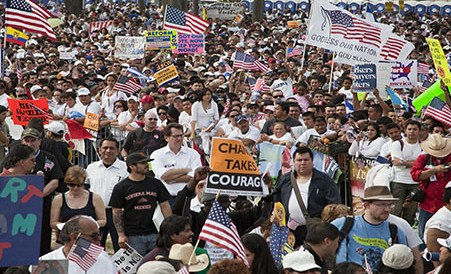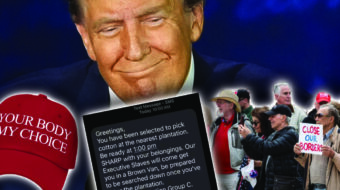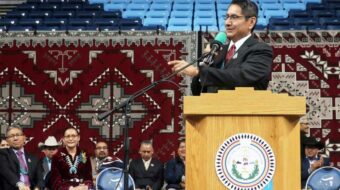
WASHINGTON — On the first really warm day here in Washington D.C., March 21, after a winter of record-breaking cold and snow, the National Mall saw the largest immigrant rights demonstration since the mega marches of 2006.
The March for America, organized by the broadly based Reform Immigration for America coalition, reached and exceeded the organizers’ goal of gathering 100,000 demonstrators on the mall. Organizers placed the vast multiracial throng, which stretched from 7th street to 14th street with overflow in all directions, at 500,000.
Though most demonstrators were Latinos, there were many African Americans, Asians and others. Most people, organized by local community and ethnic organizations and churches, joined other marchers with t-shirts and signs for labor groups, including SEIU, UNITE-HERE, United Food and Commercial Workers, Laborers International Union and the Labor Council on Latin American Advancement. Many people waved U.S. flags, but flags from Mexico, El Salvador, Guatemala, the Dominican Republic and other countries could be seen also. Participants could be heard chatting in English and Spanish, Mandarin, Arabic and other tongues. There was a whole contingent of speakers of Quiche Maya, a language of Guatemala. Marchers came from as far away as California and New England, with at least 2,000 from Chicago alone.
The march was organized to put pressure on both the Obama administration and Congress to get moving on immigration reform. Many people in the immigrant rights movements have expressed worry and frustration that the administration has seemed to relegate immigration reform to a low level of priority. There were more deportations in the first year of the Obama administration than in the last year of the Bush administration, and the government, while modifying some of the harshest Bush policies, has continued other repressive mechanisms such as deputizing local police to do immigration enforcement work and promoting the “E Verify” system which checks up on workers’ immigration status electronically.
There is already a bill in Congress on comprehensive immigration reform, HR 4321, which was designed by U.S. Representative Luis Gutierrez, D-Ill.,and sponsored by Representative.Solomon Ortiz, D-Texas. Last week, Senators Charles Schuman, D-N.Y., and Lindsey Graham, R-S.C., announced the outlines of a “bipartisan” bill, which is well to the right of the Ortiz-Gutierrez bill.
President Obama, making a surprise appearance at Sunday’s rally via a video link up, promised to continue to back comprehensive reform but hinted that he prefers the Schumer-Graham approach. In spite of all doubts, when his face appeared on the gigantic screens, a tremendous cheer went up.
Gutierrez, who spoke at the rally, warned that today’s mobilization is only the beginning, but reminded the crowd of what the fight is for: “I want the light [of justice] to shine on every immigrant: On the woman on her hands and knees all day, digging onions in Salinas. On the man washing dishes, thousands of dishes, in El Paso until he can barely feel his hands anymore. On the woman in a sweatship-in the basement, with no union, no rights in New York City-for a few dollars to support her kids”.
Labor was represented among the speakers by AFL-CIO Executive Vice President Arlene Holt Baker among others. Her federation has been supporting legalization and the approach taken in Mr. Gutierrez’ bill, but has voiced opposition to the inclusion of a guest worker-bill in the Schumer-Graham outline. Top African-American leadership was represented by Rev. Jesse Jackson, National Urban League President Marc Morial, and NAACP Executive Director Benjamin Jealous. Cardinal Roger Mahoney of the Archdiocese of Los Angeles was accompanied by Protestant, Evangelical, Jewish and Muslim leaders. There was even a contingent of immigrants who were arrested in a raid against restaurant workers in Maryland days before the rally: They appeared with their ankle bracelets in place and switched on, and according to a report in the Washington Post they had to leave early because the batteries needed to be recharged. They have to report shortly for their deportation hearings.
An important feature of the rally was that the organizers walked the participants through the techniques of using social media, such as Twitter, to organize the arduous lobbying campaign that will now follow.
Photo: reformimmigrationforamerica.org/blog/march-index/







Comments